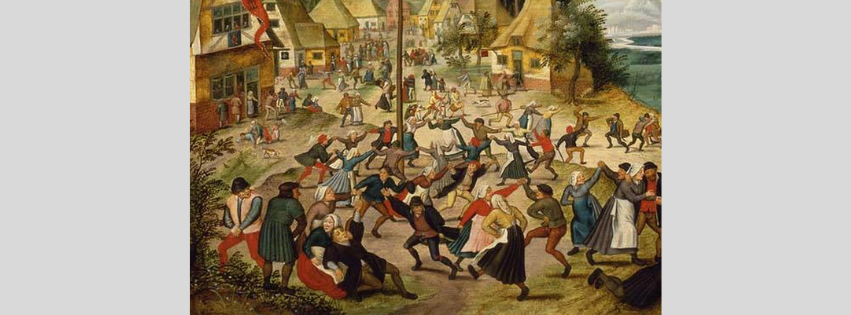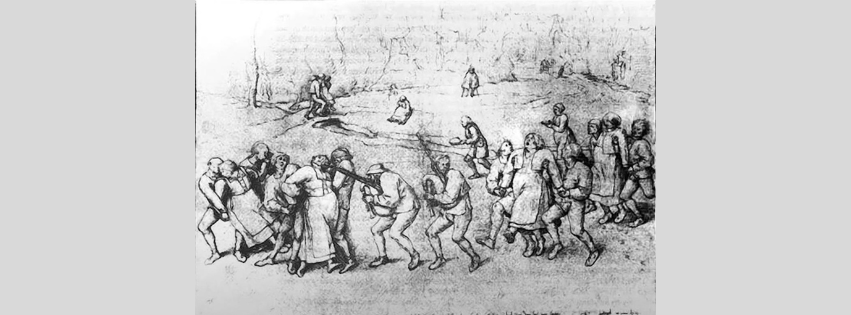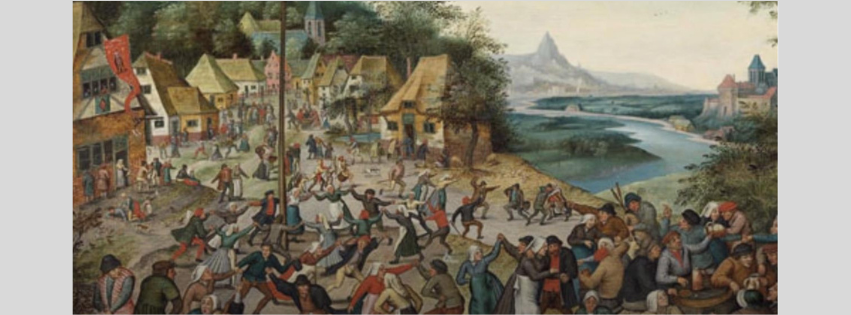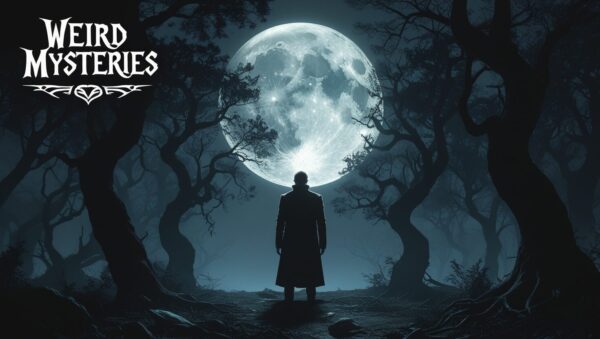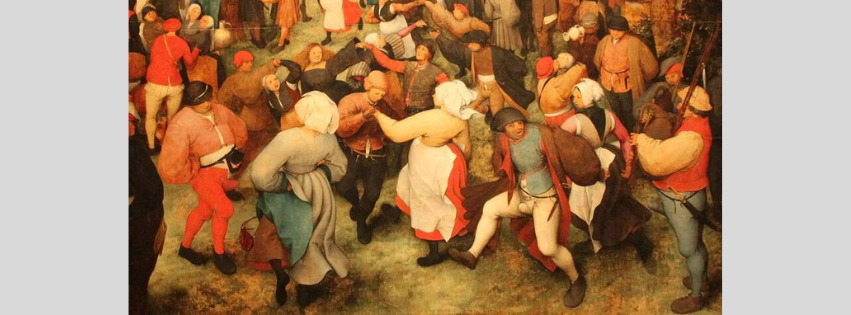
In the summer of 1518, the town of Strasbourg (then part of the Holy Roman Empire, now in modern-day France) became the center of a strange and horrifying phenomenon known as the Dancing Plague. A mysterious and uncontrollable epidemic of dancing that led to dozens, and in some reports, even hundreds of people dancing themselves to exhaustion, injury, and, in some cases, death. It remains one of the most enigmatic and perplexing events in history. How could people suddenly begin dancing uncontrollably for days on end, seemingly without reason or explanation?
In this blog post, we will explore the mysterious Dancing Plague of 1518, its historical context, theories about its cause, and its aftermath. We will also answer 50 frequently asked questions that delve deeper into this strange and fascinating event.
What Was The Dancing Plague of 1518?
The Dancing Plague, also referred to as the “Dance Mania,” was an incident that occurred in the summer of 1518 in Strasbourg. It began with a woman named Frau Troffea, who, on July 14, 1518, started dancing uncontrollably in the streets. Within days, more people joined in, until it was reported that as many as 400 people were dancing for days without stopping. Some accounts suggest that they danced until they collapsed from exhaustion or even died from strokes or heart attacks. Local authorities, desperate to understand and stop the phenomenon, took extreme measures by encouraging more dancing in the hope that it would help “cure” the afflicted. Despite their efforts, the dancing plague continued for weeks before it eventually subsided.
What Caused The Dancing Plague of 1518?
The cause of the Dancing Plague has remained a subject of speculation for centuries. Historians and medical experts have put forward several theories, including:
- Ergot Poisoning: One popular theory is that the dancers were afflicted with ergotism, a condition caused by consuming rye bread contaminated with Claviceps purpurea, a fungus that grows on rye. Ergot contains hallucinogenic compounds that can lead to convulsions, hallucinations, and even death.
- Mass Hysteria: Another theory is that the plague was caused by mass hysteria or a collective psychological phenomenon. The people of Strasbourg were living in a time of immense stress, with widespread disease, famine, and social instability. This pressure might have led to a psychological breakdown, resulting in uncontrollable dancing.
- Religious or Spiritual Factors: Some historians argue that the people involved may have believed they were cursed or possessed by spirits. During this period, supernatural explanations for unusual events were common, and people might have seen the dancing as a form of divine punishment or spiritual possession.
- Encephalitis or Other Diseases: Some researchers have proposed that a viral infection, such as encephalitis, could have caused the strange behavior. Encephalitis is an inflammation of the brain that can lead to confusion, convulsions, and erratic movements.
How Long Did the Dancing Plague Last?
The Dancing Plague of 1518 lasted for about a month. It started in July and reportedly ended in late August or early September of the same year. However, some accounts suggest that the effects lingered longer for a few individuals who were affected.
How Many People Were Affected?
The number of people who danced during the Dancing Plague varies across different historical accounts. Some estimates suggest that as many as 400 people were involved, though more conservative estimates suggest the number was lower. Regardless of the exact figure, it was a sizable portion of the population in Strasbourg at the time.
Theories About The Cause of The Dancing Plague of 1518
1. Ergot Poisoning
One of the most commonly cited explanations is ergotism. Rye infected with the ergot fungus contains toxic compounds that, when consumed, can cause severe symptoms, including muscle spasms, hallucinations, and convulsions. These effects may have caused the afflicted individuals to dance uncontrollably.
2. Mass Hysteria
Given the extreme conditions in Strasbourg at the time, with famine, disease, and social unrest, some researchers believe that mass hysteria might explain the phenomenon. The collective stress and tension could have triggered an outbreak of involuntary dancing, which spread through the community.
3. Religious Fervor
Some people at the time believed that the dancing was the result of divine punishment or demonic possession. Religious fervor in the region could have led to a psychological outbreak, where people danced in what they thought was a religious or spiritual experience.
50 Frequently Asked Questions (FAQs) About the Dancing Plague of 1518
- What exactly was the Dancing Plague? The Dancing Plague was an event in which people danced uncontrollably, with some even dancing to death.
- How did the Dancing Plague start? It started with a woman named Frau Troffea, who began dancing uncontrollably in July 1518.
- How long did the Dancing Plague last? The Dancing Plague lasted approximately one month, from July to August 1518.
- How many people were affected by the Dancing Plague? Around 400 people are believed to have danced during the outbreak.
- Where did the Dancing Plague occur? It occurred in Strasbourg, which was part of the Holy Roman Empire at the time (now in France).
- What caused the Dancing Plague? Several theories exist, including ergot poisoning, mass hysteria, and religious factors.
- What is ergot poisoning? Ergot poisoning is caused by eating rye infected with the ergot fungus, which contains hallucinogenic compounds.
- Did people die from the Dancing Plague? Yes, some people reportedly died from exhaustion, strokes, or heart attacks after dancing continuously.
- What did the authorities do to stop the Dancing Plague? Local authorities attempted to cure the plague by encouraging more dancing, believing it would help the afflicted.
- Was the Dancing Plague the only event of its kind? Similar dance epidemics occurred throughout history, but the 1518 event is the most famous.
- Were any medical treatments used to cure the plague? There were no effective treatments at the time, but people were often taken to monasteries for prayer and care.
- Is there any evidence of people continuing to dance after the event? Some reports suggest a few people continued to exhibit strange symptoms for a period of time.
- Were there any other strange occurrences in Strasbourg at the time? Strasbourg was experiencing famine, disease, and a high level of social stress, which could have contributed to the outbreak.
- What did people believe caused the Dancing Plague? Some believed it was caused by divine punishment or demonic possession.
- How did the Dancing Plague affect the social order? The event caused panic and confusion, leading to widespread fear and chaos in Strasbourg.
- Did the Dancing Plague affect only adults? It primarily affected adults, but children were also reported to be involved in the outbreak.
- How did people react when they saw others dancing uncontrollably? Many people joined in out of fear, while others tried to stop the dancers or sought help from local authorities.
- Did the plague have any long-term effects on the people who survived? Survivors of the Dancing Plague were often left with physical and psychological trauma.
- What were the medical explanations for the Dancing Plague? Experts at the time believed it was caused by a combination of divine wrath, psychological stress, or illness.
- How does mass hysteria explain the Dancing Plague? Mass hysteria suggests that stress and social pressure caused a collective psychological breakdown.
- Could the Dancing Plague be an outbreak of encephalitis? Some researchers have speculated that encephalitis, a viral infection, could have caused the strange behavior.
- Were there any similar events in other parts of Europe? Yes, similar outbreaks of dancing mania were reported in other European cities during the medieval period.
- Did the Catholic Church have any role in the Dancing Plague? The Church played a central role, as it was believed by some that the plague was a form of divine punishment.
- Were the afflicted people punished for their behavior? There is no evidence that those who danced were punished, but some were likely marginalized or seen as mentally ill.
- Did the Dancing Plague have any lasting cultural impact? It left a legacy of intrigue and confusion, with the event being remembered as a bizarre and inexplicable chapter in history.
- Were there any explanations from the medical community at the time? The medical community at the time was largely ineffective in explaining or curing the plague.
- Was the Dancing Plague a form of possession or witchcraft? Some believed the dancers were possessed by evil spirits, leading to fears of witchcraft.
- How did the city of Strasbourg recover from the Dancing Plague? After the plague ended, life slowly returned to normal, though the event left a mark on the city’s collective memory.
- Could the Dancing Plague happen again today? It is unlikely today, given modern medical understanding, but the phenomenon remains a subject of historical curiosity.
- Was the Dancing Plague a form of social protest? Some believe it could have been a form of mass protest against the harsh conditions of the time, though this is speculative.
- What role did religion play in the event? Religious beliefs were central to the understanding of the event, with many believing it was a punishment from God.
- What is the link between ergotism and the symptoms of the Dancing Plague? Ergotism causes symptoms such as hallucinations, spasms, and convulsions, which are similar to those observed during the outbreak.
- How was the Dancing Plague recorded in history? Contemporary accounts, including those of physicians and church officials, documented the strange occurrence.
- What other mass hysteria events are similar to the Dancing Plague? Other mass hysteria events include the Tanganyika laughter epidemic (1962) and the 16th-century “dancing mania” outbreaks across Europe.
- Did the government try to intervene during the Dancing Plague? Authorities tried to contain the event by setting up temporary “dancing halls,” but their efforts were in vain.
- How did the people who danced feel about it? Some people were unaware of their actions, while others felt compelled to dance due to the overwhelming urge.
- Did any other towns experience similar outbreaks? Similar outbreaks were reported in several other European towns, but none as extreme as the 1518 event.
- Did the Dancing Plague have any effect on medicine? It highlighted the lack of medical understanding at the time and led to debates over the causes of unusual diseases.
- Were the people who danced ever treated for their condition? There were no effective treatments, but many were given religious remedies or prayers for healing.
- How did the Dancing Plague affect local economies? The event disrupted local economies, as it caused fear and confusion among residents and merchants.
- Was the Dancing Plague connected to the Black Death? Though both occurred during periods of social unrest, they were unrelated events.
- Did anyone survive the Dancing Plague? Many of the afflicted eventually recovered, though some never regained their full health.
- What role did superstition play in the Dancing Plague? Superstition played a significant role, as people believed the dancers were cursed or possessed.
- Was there any historical precedent for such events? Instances of dancing mania were reported as early as the 14th century, with outbreaks in various parts of Europe.
- Did the Dancing Plague affect other towns in France? While Strasbourg was the epicenter, reports of similar events emerged from other regions in Europe during this time.
- Were there any legends associated with the Dancing Plague? Many legends arose, including the belief that the plague was caused by a curse placed on the city by witches.
- How did doctors try to diagnose the condition? Doctors relied on medieval medical practices, including bloodletting and herbal treatments, though they were ineffective.
- Was there any lasting stigma attached to the Dancing Plague? While some saw it as a divine punishment, others considered it a sign of psychological distress within society.
- How did modern medicine interpret the event? Modern medicine offers several potential explanations, including ergot poisoning, psychological factors, and viral infections.
- Can we ever fully explain the Dancing Plague? While many theories exist, the Dancing Plague remains one of history’s most bizarre and mysterious events, leaving room for continued speculation.
This blog post aims to provide an in-depth look into the strange and perplexing phenomenon known as the Dancing Plague of 1518. Through these questions, we’ve explored the event’s causes, its impact, and its lingering legacy in history. Theories abound, but the mystery persists.
